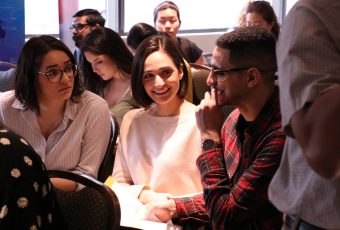Sydney biomedical engineering creates bone replacement implants
A biomedical engineering team based at the University of Sydney has developed a new, low-cost method for producing bone replacement implants for severely damaged skulls.
The group worked with a Sydney neurosurgeon to create the new 3D printing technique that enables clinicians to produce a patient-matched implant in a matter of days rather than several weeks.
Dr Phillip Boughton, head Sydney Faculty of Engineering‘s cutting edge Implant Design and Manufacture laboratory and supervisor of the project said, “Serious head trauma can lead to significant loss of skull bone. The current procedure requires a surgeon to stretch and stitch excess skin around the wound and wait until a suitable implant can be produced.
“Our new rapid templating method makes it possible to generate patient-matched, safe, sterile cranioplasty implants using polymer based bone cement within days of receiving a patient scans.”
The rapid templating craniosplasty technique is not only faster but also significantly cheaper than current methods used to match a patient’s anatomy says Annabelle Chan, PhD researcher on the project.
“Cranioplasty implants widely used to reconstruct smashed bone include titanium meshes and 3D printed parts or bone cement moulded by hand. They can cost as much as five thousand dollars.
The biomedical engineers worked with Dr James Van Gelder lead neurosurgeon at Liverpool Hospital.
“Existing 3D printed implants are weaker; they are also associated with a higher risk for contamination that can lead to infection or inflammation,” states Dr Van Gelder.
“I was particularly interested in working with biomedical engineers to create implants for individual patients. Implants that could be customised based on radiology and my specific requirements for the patient.
“Anatomical matching of patient’s skull bone is important for improving a patient’s quality of life post-operation” says Doctor Van Gelder.
“With this new technique we are able to create a sterile template of the patients damaged region, then in a sterile environment apply bio-compatible polymer bone cement to that patient’s specific template to produce their personalised implant.”
The pioneering technique has successfully been used on several patients.
The team of biomedical researchers responsible of the rapid templating craniosplasty also includes David Shen, and Jeremy Kwarcinski.
“We’ve had some great initial clinical success for cranioplasty and the next steps will be to help regenerate bone and cartilage via our rapid templated scaffold implant systems,” says Jeremy who will undertake his PhD at the University of Sydney in 2015.
University of Sydney Biomedical Engineering
Biomedical engineering is a multidisciplinary branch of engineering that combines knowledge of mechanical, mechatronic, electronic, chemical and materials engineering with the life sciences of medicine, biology and molecular biology. It is one of the fastest growing branches of engineering.
Biomedical engineers design and manufacture implantable and external medical devices including orthopaedic, cardiovascular and other electronic and surgical equipment. These include artificial joints and limbs, dental devices, medical electronics and implantable devices, as well as tissue engineering and computer simulation such as MRI, x-ray and CT scans.
Master of Engineering (Biomedical Engineering)
A postgraduate specialisation in biomedical engineering will allow you to apply engineering principles in order to understand, modify or control biological systems. You will also learn how develop technology to monitor physiological functions and to assist in diagnosis and treatment of patients. You may engage in areas of study including biomaterials engineering, applied tissue engineering, advanced engineering materials and computational fluid dynamics.
Program: Master of Engineering (Biomedical Engineering)
Location: Sydney, New South Wales
Semester intakes: February and July
Duration: 1.5 years
Apply to the University of Sydney Engineering School!
*

































Ask A Question
Ask us about your program of interest, or if you have a question about our services.
CONTACT US TODAY